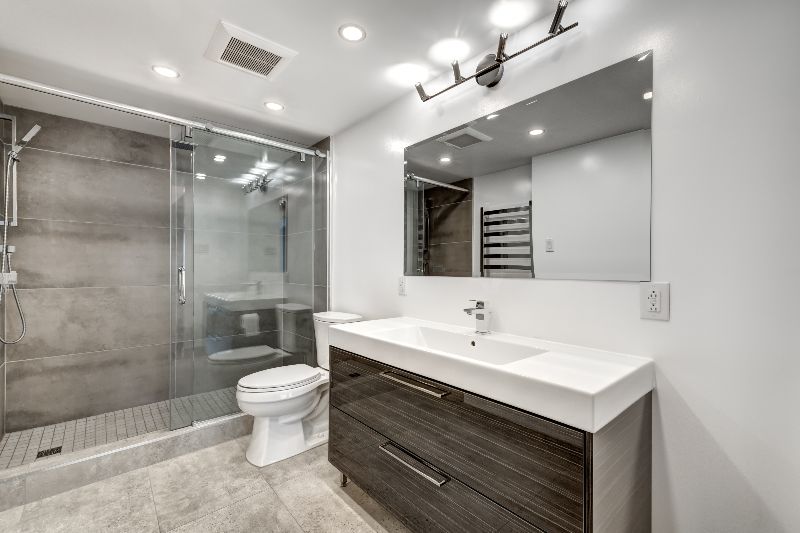
Black mold gets all the attention, but you don’t want mold of any kind growing in your home. Unfortunately, spores are everywhere—all they need is moisture, a food source, and the right surface to grow. This makes your bathroom a prime place for mold. If you’re struggling to remove bathroom mold and prevent it from returning, this guide should help.
How to Remove Bathroom Mold
Begin by checking for signs of mold, including discolored grout or tile, musty odors, or stains on the ceilings and walls. Then, treat any mold you find with bleach, vinegar, baking soda, or borax.
Bleach or Vinegar Mold Removal Method
Bleach is excellent at removing mold stains from grout and other porous surfaces. If you’d rather not use bleach, white vinegar is a safe, natural substitute.
- Combine one part bleach or vinegar with two parts water in a spray bottle.
- Spray the affected area, and let the solution sit for 10 minutes.
- Spray the surface again, and then scrub with a sponge, cloth, coarse brush (for large areas), or old toothbrush (for grout and other small areas).
- Rinse thoroughly with water and dry with a clean cloth.
Baking Soda Mold Removal Method
Baking soda is another natural mold removal agent.
- Mix baking soda with enough water to form a paste.
- Cover the mold with the paste and let it sit for 10 minutes.
- Scrub the surface with a brush.
- Rinse thoroughly with water and dry with a clean cloth.
Borax Mold Removal Method
Borax is a natural fungicide. You can find this white mineral powder in the laundry section of the grocery store.
- Mix one-quarter cup borax with one quart of water, pour into a spray bottle, and shake well.
- Spray the affected area, avoiding contact with porous surfaces such as drywall, wood, or carpet.
- Scrub the surface with a brush and wipe with a clean rag.
- Finish with a light spray of borax to prevent mold from returning.
How to Prevent Bathroom Mold
Once you’ve removed all visible mold, keep it at bay with these prevention tips:
- Run the bathroom exhaust fan when showering to pull moisture from the room.
- Squeegee your shower walls and wipe up standing water promptly.
- Clean shower storage niches and racks, removing bottles and wiping beneath them.
- Clean or replace the shower curtain regularly.
- Launder bath towels and rugs often.
- Use paint formulated with mold inhibitors (but don’t paint over existing mold).
- Check for cracked tile or missing grout that could allow moisture behind the wall.
- Call a plumber to fix plumbing leaks as soon as possible.
If you suspect plumbing leaks, Puget Sound Plumbing and Heating can find and fix them. This important mold prevention tip can also preserve your home’s structural integrity and lower your water bills. Call us today at (206) 350-0079 or contact us online to schedule pipe leak repair in Seattle, WA.


